Laboratory of Rare Lung Diseases
Guest Lecturers and Visiting Professors
Omar Tliba, PhD
Associate Professor
Thomas Jefferson University
Dr. Tliba’s research efforts are focused in four major areas:
1. Use airway smooth muscle (ASM) cells as a model to gain mechanistic insight in the development of steroid insensitivity in severe asthma.
2. Characterizing the mechanisms that regulate glucocorticoid receptor phosphorylation with a primary focus on the role of MAPK pathways and serine/threonine protein phosphatases (PPs). The goal is to provide new insight into therapies aiming at restoring steroid responsiveness in patients with severe asthma.
3. Expression and function of glucocorticoid-target genes in airway cells. These studies are focused on evaluating the biological role of steroid-target genes in airway cells both in vivo and in vitro using endobronchial tissues isolated from asthmatics with varying degrees of disease severity. Our long-term goal is to integrate the biological effects of such genes in the evaluation of inhaled glucocorticoids efficacy in asthmatic patients.
4. Transcriptional regulation of cytokine functions in airway cells. The aim of these studies is to identify intracellular signaling pathways by which cytokines modulate or induce different cellular responses.
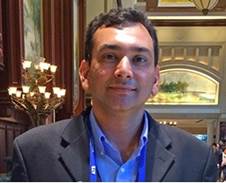 Ashish Sharma, MBBS, Ph.D.
Ashish Sharma, MBBS, Ph.D.
Assistant Professor of Research
University of Virginia, Charlottesville
Dr. Sharma is the studying the role of T cells, IL-17, RAGE and NADPH oxidase in pulmonary IR injury utilizing in vitro primary cell culture and an in vivo mouse lung model of lung IR. Dr. Sharma is also conducting research on the ability of stem cell therapy to prevent lung IR injury.
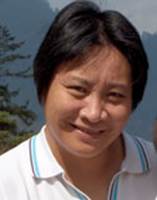 Jane Yu, Ph.D.
Jane Yu, Ph.D.
Instructor
Harvard Medical School, Department of medicine
Dr. Yu’s research interests are in the lymphangioleiomyomatosis (LAM), the pulmonary manifestation of Tuberous Sclerosis Complex (TSC). LAM occurs exclusively in women, and the molecular basis for this female predominance is not well understood. Dr. Yu is focused on the establishment and characterization of the primary cell cultures derived from angiomyolipoma and LAM, investigation of the role of estrogen and anti-estrogen agents in stimulating LAM-associated angiomyolipoma cell growth and signaling pathways, identification of molecular and metabolic signatures associated with estrogen-promoted metabolic alteration and survival of tuberin-deficient cells, and development of animal models of LAM to test the efficacy of FDA-approved drugs. The long-term research goal is to study mechanisms through which tuberin and hamartin regulate estrogen-mediated survival and metastatic phenotypes, and develops estrogen-focused targeted therapeutic strategies for LAM.
 Richard W. Weber, MD
Richard W. Weber, MD
Professor of Medicine
University of Colorado School of Medicine, National Jewish Health Colorado
Dr. Weber has a particular interest in pollens associated with allergies. His research has focused on pollen allergies and immunotherapy. His photos of allergen-producing plants and accompanying essays have graced the covers of the journal Annals of Allergy, Asthma and Immunology, of which he is associate editor.
He has been chair of the ACAAI's Aerobiology Committee all but four of the past 25 years and has been program director of the Aeroallergen Identification Workshop since 1985. He is also currently serving as President of ACAAI (beginning November 2012).
At National Jewish, in addition to seeing a wide variety of allergic and asthmatic patients, Dr. Weber has developed special expertise in urticaria, and aspirin desensitization for patients with allergies to the medication.
 Andrew Gow, PhD
Andrew Gow, PhD
Associate Professor
Rutgers University
Dr. Gow investigates the mechanisms of Nitric Oxide signaling in a wide variety of pathophysiological conditions. They seek to understand the molecular mechanisms involved in controlling Nitric Oxide signaling and answer the question as to how nature uses such a simple molecule to control a multitude of biological processes and in almost every organism. In particular, they investigate the role of Nitric Oxide in cardiopulmonary diseases such as emphysema, acute lung injury, bronchopulmonary dysplasia, sickle cell disease and diabetes. They are particularly interested in the function of Nitric Oxide in inflammatory cells such as macrophages and microglia. It is thought that by better understanding the mechanisms involved in Nitric Oxide signaling that they can design appropriate pharmacological interventions for human diseases in which Nitric Oxide metabolism is disrupted.
 Michael Bauer, Ph.D.
Michael Bauer, Ph.D.
Assistant Professor of Surgery
University of Pittsburgh
Pulmonary arterial hypertension (PH) is a devastating disease characterized by vascular proliferation and remodeling of small pulmonary arteries, resulting in increased pulmonary vascular resistance, right heart failure and death. PH can be idiopathic, familial, associated with connective tissue disease, or resultant from drug or toxin exposure. Patients with these various forms of PH exhibit similar clinical, functional, and hemodynamic characteristics. Poor survival of PH patients was recently highlighted by registry data published by the French Network on Pulmonary Hypertension. One, two, and three-year survival rates of enrolled patients were 87%, 76%, and 67%, respectively. Thus, while new therapies have made an impact on both morbidity and mortality PH remains a progressive and fatal disease.
One barrier to the effective treatment of the disease is a relative lack of understanding of the role the immune system plays in the development and progression of PH. The current focus of Dr. Bauer’s lab is to understand the role the innate immune system plays in the pathogenesis of PH. In particular they are interested in the role of the complement system and innate immune receptors (i.e. toll-like receptors, RAGE) play in the disease. Their overall goal is to develop novel pulmonary arterial hypertension therapeutics. Towards that goal they utilize pharmacologic, biochemical and molecular tools to study the pathogenesis of pulmonary arterial hypertension in both cell culture and rodent models of the disease.
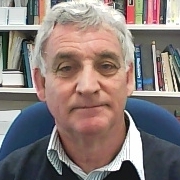 Mervyn Merrilees, Ph.D., DSc.
Mervyn Merrilees, Ph.D., DSc.
Associate Professor of Anatomy
University of Auckland School of Medical Sciences
Throughout Dr. Merrilees’ research career he has had a special interest in factors that affect the morphology, structure and matrix composition of tissues. Initially his studies were directed at understanding how epithelial tissues, including sense organs, influence tissue structure and remodeling. These studies were carried out on the lateral line sensory system in fish. Then he moved on to study the effects of mechanical forces on mammalian tissues, especially in relation to tendon structure, and wound healing and the formation of hypertrophic scars. This was followed by further investigations on how other tissues and cells affect tissue structure and composition. The major model system for these latter studies has been the artery wall where he has shown that vascular endothelium can be a potent modulator of matrix composition in the underlying wall. The significance of these studies is that this epithelial/mesenchymal interaction is believed to play a major role in the development of atherosclerotic plaques.
These studies culminated with the discovery of an endothelial factor (TGF-B) responsible for stimulating increased synthesis of matrix proteoglycans in the vessel wall.These proteoglycans trap, bind, and enhance the uptake of atherogenic cholesterol-containing lipoproteins. It is now believed that the interaction between proteoglycans and lipids is the key event in the initiation of lesion development and this idea is encapsulated in the "Response-to-Retention Hypothesis" of atherogenesis.His current studies are directed at finding ways in which matrix composition can be modulated to produce a more compact and 'lipid resistant' intima. Through gene manipulation he has discovered how to switch on elastin synthesis and has been able to change the structure of blood vessel wall in vivo to produce an intima that is elastin-rich and resembles a media. The aim now is to dissect the mechanism by which elastin is upregulated and assembled into fibers and also to find a way of achieving elastogenesis through pharmaceutical approaches. He is currently testing the engineered elastin-rich neotima to find out if it is resistant to deposition of cholesterol-containing lipoproteins. He is also extending these studies on elastin to lung and lung diseases, such as chronic obstructive pulmonary disease and lymphangioleiomyomatosis, where there is a deficiency of elastin, and to the fibrosis that occurs in transplanted kidneys undergoing chronic allograft nephropathy.
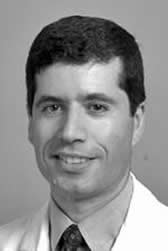 Elliot Israel, M.D.
Elliot Israel, M.D.
Associate Professor of Medicine, Harvard Medical School
Director, Respiratory Therapy, Brigham and Women's Hospital
Director, Clinical Research, Pulmonary Division, Brigham and Women's Hospital
Dr. Elliot Israel is Associate Professor of Medicine at Harvard Medical School in Boston, Massachusetts. He is also Director of Clinical Research in the Pulmonary Division and Director of the Respiratory Therapy Department at Brigham and Women’s Hospital in Boston, and Physician in Medicine at Beth Israel Hospital, also in Boston.
Dr. Israel’s research interests center on clinical trial and translational research aimed at optimizing asthma pharmacotherapy and defining asthma pathobiology especially as it relates to airway inflammation. He has been particularly interested in the role of eicosanoids in asthma, severe asthma, and asthma pharmacogenetics. His research helped define the role for leukotriene modifiers in the treatment of asthma. He has several grants from the National Institutes of Health related to asthma. He leads one of the nine sites throughout the country supported by the NIH to conduct research to define optimal asthma therapy (The NIH AsthmaNet). This grant supports training in clinical research as well. He is currently examining the effects of mast cell depletion on the bronchoscopic inflammatory phenotype in patients with severe asthma. His recent research has also focused on pharmacogenetic aspects of asthma treatment-particularly as determined by polymorphisms of the B2-adrenergic receptor. Additionally he is investigating the use of exhaled breath condensate in better understanding the biology of airway narrowing and asthma exacerbations.
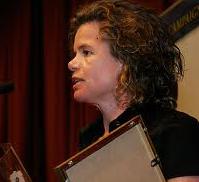 Alaina Ammit, M.Sc., Ph.D
Alaina Ammit, M.Sc., Ph.D
Associate Professor, Pharmaceutical Chemistry
University of Sydney
Asthma is an inflammatory condition of the lung associated with structural remodeling of the airway wall. Long-term exposure to pro-inflammatory mediators, including cytokines, results in remodeling or thickening of the airway. As development of remodeled airways is correlated with deterioration of lung function, we urgently require anti-inflammatory therapies that reduce and reverse structural changes in remodeled airways. Corticosteroids are the mainstay of asthma pharmacotherapy to suppress inflammation, but they have unwanted effects, and can only halt some, but not all, aspects of airway remodeling in asthmatics. Thus, alternative anti-inflammatory strategies are needed, and in Dr. Ammit’s lab they investigate the molecular mechanisms underlying airway inflammation in airway cells. In order to aid the future design of novel and efficacious anti-inflammatory strategies, we need a greater understanding of the molecular mechanism/s underlying inflammatory pathways. Dr. Ammit’s work helps increase the understanding of how RNA binding proteins bind to the 3'-untranslated region of a number of inflammatory genes to increase their messenger RNA stability. Because increased messenger RNA stability ultimately controls the amount of protein produced, post-transcriptional regulation is a critical point in gene expression. It is their hope that by focusing on post-transcriptional regulation of genes their research may elucidate novel therapeutic targets for future pharmacological intervention in inflammatory diseases.
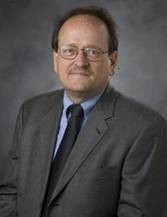 Thomas M. Murphy, M.D.
Thomas M. Murphy, M.D.
Professor of Pediatrics
Duke University Medical Center, Duke Children’s Hospital
Dr. Murphy’s laboratory leads in developing important models studying the contributions of airway smooth muscle (ASM) to airway hyperresponsiveness in the young.
His laboratory’s areas of research interest include:
- Maturation of airway contractile responses
- Ontogenesis of airways hyperresponsiveness caused by inflammation
- Role of the high affinity IgE receptor on airway smooth muscle in regulating long term hyperresponsiveness and acute allergic contraction
- Maturation and mechanisms of airway smooth muscle relaxation
- Mechanical plasticity of airway smooth muscle and its development
- Identity and function of airway smooth muscle NAD(P)H oxidase
- Role of Gastrin Releasing Peptide in the Pathogenesis of Asthma and its Therapeutic Targetability
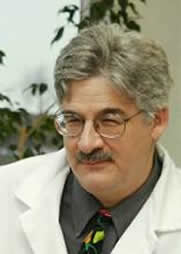 Charles G. Irvin, Ph.D.
Charles G. Irvin, Ph.D.
Professor, Department of Molecular Physiology & Biophysics, Department of Medicine University of Vermont
Director, Vermont Lung Center, College of Medicine University of Vermont
Professor Irvin was a pioneer in establishing the inflammatory basis of airway dysfunction in asthma, providing the scientific basis for the current medically accepted use of anti-inflammatory therapy in asthma. He has made advancements to understanding the lung mechanics of both normal and diseased lungs and also to the clinical aspects and treatment of lung disease, particularly asthma. A significant aspect of his work lies in its bridging of the basic and clinical realms. Professor Irvin's research has been published in articles in the leading journals in his field, and in numerous book chapters, reviews, and abstracts. He has received continuous support for his research from a variety of sponsors, most notably the National Institutes of Health, and currently heads both UVM's NIH COBRE program in Lung Biology and Disease and a training grant sponsoring graduate students and post-doctoral researchers.
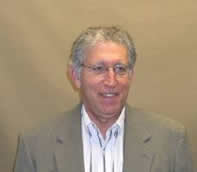 Arnold Brody, Ph.D.
Arnold Brody, Ph.D.
Professor
Department of Molecular Biomedical Sciences
North Carolina State University
Dr. Brody received a B.S. degree in Zoology at Colorado State University, a M.S. in Functional Vertebrate Anatomy at the University of Illinois, and then a Ph.D. in Cell Biology at Colorado State in 1969. He then carried out three years of Post-doctoral study at Ohio State University before accepting his first faculty position as an Assistant Professor in the Pathology Department at the University of Vermont in 1978. After six years in Vermont, Dr. Brody moved to the National Institute of Environmental Health Sciences (NIEHS). As one the National Institutes of Health, this is where Dr. Brody began his fundamental research on the mechanisms through inhaled environmental agents causing lung disease. This also is where he began his own studies designed to explain how asbestos fibers cause fibrogenic and neoplastic diseases. While at the NIH, Dr. Brody taught at Duke, the University of North Carolina and at North Carolina State University. After 15 years at the NIEHS, where Dr. Brody was head of the Lung Pathology Laboratory, he accepted the position as Professor of Pathology at Tulane in 1993. In 1999, he was promoted to Vice Chair of the Department. Since 2006, Dr. Brody has been a professor in the Department of Molecular Biomedical Sciences at North Carolina State University.
Dr. Brody was the first investigator to establish that inhaled asbestos fibers are translocated to the interstitial compartments of the lung by active uptake of the alveolar epithelial lining cells. His work showed that lung macrophages are attracted to asbestos fibers through the activation of the 5th component of complement on alveolar surfaces. More recently, Dr. Brody's work has demonstrated that peptide factors that provide positive and negative growth signals for epithelial and mesenchymal cells are stimulated by inhaled asbestos fibers, providing a mechanism for the increased cell proliferation and matrix production that are the hallmarks of asbestosis.
Dr. Brody's research shows that growth factors such as tumor necrosis factor alpha (TNFa) and transforming growth factor beta (TGFb) are essential in the development of fibrogenic disease and that there are direct molecular pathways through which TNFa drives expression of the gene that codes for TGFb.
Dr. Brody's research has been generously supported by the NIH and has not been interrupted since he began applying for grants in 1993. He also is the recipient of support from the State of Louisiana and from several pharmaceutical concerns. Currently Dr. Brody is the Principal Investigator (PI) on two investigator-initiated grants, one from the National Heart, Lung, and Blood Institute (NHLBI) and the other from the NIEHS. He is also the PI on a training grant from the NHLBI and of a Respiratory Disease Research Center from the State of Louisiana. He has presented his work at research centers across the U.S. and in many countries worldwide.
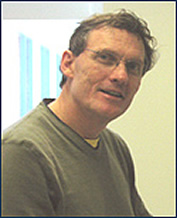 Stephen Liggett, M.D.
Stephen Liggett, M.D.
Professor of Medicine and Physiology
Director, Cardiopulmonary Genomics
University of Maryland
Dr. Liggett obtained a Bachelors of Science in Physics from the Georgia Institute of Technology and later received his Doctorate of Medicine from the University of Miami School of Medicine. Dr. Liggett completed an internship and residency in internal medicine and a fellowship in pulmonary and critical care medicine at Barnes Hospital in St. Louis, an affiliate of the Washington University School of Medicine. These experiences were followed by a four-year, laboratory-based post-doctoral fellowship at the Howard Hughes Medical Institute at Duke University.
Upon the completion of his post-doctoral fellowship, Dr. Liggett became an assistant professor of medicine and pharmacology at Duke University. He later accepted a position as professor of medicine, pharmacology and molecular genetics at the University of Cincinnati College of Medicine, where he also served as the director of pulmonary and critical care medicine.
After 13 years as the division director, Dr. Liggett became the Taylor Endowed Professor of Medicine and the director of the Cardiopulmonary Research Center at the University of Cincinnati, where he concentrated on his basic and translational research programs. In 2005, Dr. Liggett accepted a position at the University of Maryland School of Medicine as a professor of medicine and physiology and director of the Cardiopulmonary Genomics Program.
His current laboratory contains five major inter-related sections:
- The study of the molecular basis of G-protein coupled receptor structure and function.
- Delineation and characterization of human genetic variants within this receptor signaling network.
- Association studies of genetic variants with heart and lung disease and their response to treatment to develop a platform for genetically-based personalized medicine.
- Creation of genetically modified mice to define the mechanisms of heart and lung disease and "humanized mice" to explore the effects of genetic variation of human genes.
- Determination of the full genome sequences of human Rhinoviruses using high throughput next-generation sequencing technologies; analysis of the relationships between viral genomes and asthma phenotypes.
Dr. Liggett's studies have led to new paradigms in the understanding of how this superfamily of receptors -- the largest in the human genome -- carry out signaling, how they participate in the pathophysiology of congestive heart failure and asthma, and how a patient's genetic makeup can be used to tailor drug treatment.
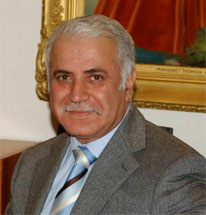 Qutayba Hamid, M.D., Ph.D.
Qutayba Hamid, M.D., Ph.D.
FRCP, FRCPath, James McGill Professor,
MUHC Strauss Chair in Respiratory Medicine,
McGill University
Dr. Qutayba Hamid is a Professor of Medicine at McGill University. He is the Director of the Respiratory Axis at McGill University Health Centre Research Institute and the Associate Director of the Meakins-Christie Laboratories. He has been awarded the prestigious James McGill Chair and more recently the MUHC Strauss Chair in Respiratory Medicine at McGill.
He received his M.D. from Mosul University, Iraq, his Ph.D. from the University of London, UK, and trained at the University of London in the U.K. He has been a professor at McGill University and the Meakins-Christie Laboratories since 1993.
Dr. Hamid is recognized internationally for his work in research on asthma and inflammation. He has published over 350 scientific articles in prestigious international journals and has contributed more than 90 chapters and review articles. He is the editor of two textbooks for Respiratory Cell and Molecular Biology and Respiratory Physiology. He has been a visiting professor worldwide at universities in United States, Europe, and Japan.
He is currently the Associate Editor of the Journal of Allergy and Clinical Immunology, the Journal of Clinical and Experimental Allergy and he is the Section Editor for the Journal of Allergy, Asthma, and Clinical Immunology.
He is a member of many scientific and professional organizations including Royal College of Physicians, London, UK, Royal College of Physicians, Canada, American Thoracic Society, Canadian Society of Allergy and Clinical Immunology, American Academy of Allergy, Asthma and Immunology, and the Royal College of Pathologists.
The main area of research interest of Dr. Hamid includes pathogenesis of asthma and COPD, role of cytokines and chemokines in airway inflammation, new therapy in asthma and allergic rhinitis and COPD.
 Allison Fryer, Ph.D.
Allison Fryer, Ph.D.
Associate Dean for Graduate Studies
Oregon Health and Science University School of Medicine
Dr. Fryer received her Ph.D. in Pharmacology from the University of London in 1986 and joined the faculty of Johns Hopkins University as an Instructor in 1989. She left Johns Hopkins as a Full Professor to move to Oregon Health and Science University in 2003. She has always been active in education. Her first graduate student earned a Ph.D. in 1992 and since then she has trained 13 Ph.D. students in her own lab as well as served on exam and thesis committees for many others.
As a popular lecturer, she has created and directed courses in Pulmonary Pharmacology, Communication in Science, and Organ Systems. She volunteered in her local elementary schools carrying out experiments that ranged from the properties of solids, liquids, and gas (with dry ice) to dissecting cow hearts. She has received teaching awards from both elementary and graduate students. Dr. Fryer served on committees overseeing graduate education at Johns Hopkins and at OHSU before becoming Director of the Program in Molecular and Cellular Biosciences at OHSU, and in 2008 Associate Dean for Graduate Studies.
Dr. Fryer also has an active research program. She discovered and characterized the receptors on parasympathetic nerves supplying the lungs that limit constriction of the airways. Having demonstrated that loss of receptor function accompanied airway hyperreactivty, a feature of asthma, she has been examining what mechanisms cause this loss of function and resulting airway hyperreactivty. Toward that end, Dr. Fryer has demonstrated the presence of a complex relationship between nerves and inflammatory cells that may normally be protective but appears to go wrong in chronic inflammatory diseases such as asthma. Her research is now focused upon understanding the physiological and pathological interactions between nerves and inflammatory cells.
She has published over 100 peer review papers, book chapters and editorials. She has been an editor for the British Journal of Pharmacology and American Journal of Respiratory and Critical Care Medicine and is a member of a grant review study section at the NIH.
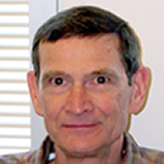 Michael Foster, Ph.D.
Michael Foster, Ph.D.
Research Professor, Pulmonary and Critical Care Medicine
Director, Inhalation Toxicology CCBVP Facility Core
Duke University School of Medicine
Dr. Foster is a Research Professor of Medicine, Division of Pulmonary and Critical Care Medicine at Duke University Medical Center. Dr. Foster graduated from New York University with a Ph.D. degree in Physiology and Environmental Science. Dr. Foster's laboratory utilizes animal models and performs translational studies in human subjects to investigate the biologic effects of respiratory irritants (particulate matter and gases) on airway and parenchymal lung tissues. The research focus is upon barrier function of the respiratory epithelial membrane, the primary location at which inhaled air pollutants initially impinge upon lung tissue. Imaging and exposure techniques developed for human study have also been integrated with initiatives that utilize lab models. Areas of interest and expertise include the following: 1) effects of oxidant-type air pollution on lung epithelial membrane physiology, 2) in vivo functional and biochemical tissue response(s) of the lung (human and animal model), and 3) host (genetic) factors as modulators of the pulmonary response to ambient air pollutants, inhalable irritants, and nuisance bio-aerosols.
 Mark Larche, Ph.D.
Mark Larche, Ph.D.
Professor, Division of Clinical Immunology & Allergy
Canada Research Chair, Allergy & Immune Tolerance
Dr. Larche completed his Ph.D. in Immunology at the Royal Postgraduate Medical School, Hammersmith Hospital in 1990, under the supervision of Professor Mary A. Ritter. He spent three years in the USA at St. Jude Children's Research Hospital, Memphis, TN as a postdoctoral fellow (Peter C. Doherty, Chairman).
On his return to the UK he joined the Immunology Department at St. Mary's Hospital Medical School (Jonathan R. Lamb, Chairman), prior to joining the faculty of the National Heart and Lung Institute (A. Barry Kay, Chairman) which later became a Division of the Faculty of Medicine of Imperial College.
Dr. Larche is Canada Research Chair in Allergy & Immune Tolerance and Professor in the Department of Medicine at McMaster University. Dr. Larche is also Honorary Professorial Research Fellow in the Faculty of Medicine at Imperial College, London, UK from where he recently made the move to Canada. In 2004 he was a Distinguished Visiting Professor at the University of Manitoba, Canada.
From 2001-2006 he was an Asthma UK Senior Research Fellow. He is a former member of the Medical Research Council New Investigator Awards (NIA) Panel, the MRC College of Experts (Physiological Systems and Clinical Sciences Board) and the Asthma UK Research Committee. He was Chairman of the Asthma Section of the European Academy of Allergology and Clinical Immunology (EAACI) from 2001-2005, a member of the EAACI Executive Committee (2001-2005) and a member of the BSI Vaccine Affinity Group Board (2003-2006).
He is an Associate Editor of Respiratory Research and a member of the editorial board of Clinical Experimental Immunology and Clinical Experimental Allergy.
Dr. Larche is a member of the AllerGen Network of Centres of Excellence and numerous professional societies including the Institute of Learning and Teaching, the British Society for Immunology, the British Society of Allergy and Clinical Immunology, the European Academy of Allergology and Clinical Immunology, the American Academy of Allergy, Asthma and Immunology, and the Collegium Internationale Allergologicum.
Dr. Larche has authored over 90 scientific papers and has been the recipient of several international prizes for his work including “The Respiratory 2000 International Young Investigator Award”, “The Henning Lowenstein Research Award 2000”, and the "Pharmacia Allergy Research Foundation Award" in 2001. Together with Professor AB Kay, he founded “Circassia Ltd.”, a biotechnology company to develop vaccines for allergic diseases. Research interests extend beyond asthma and allergies into transplantation, celiac disease and autoimmune diseases
 Donald L. Gill, Ph.D.
Donald L. Gill, Ph.D.
Chairperson, Department of Biochemistry
Temple University School of Medicine
Calcium is one of the most fundamental signaling agents in all animal cells. Cells have evolved to precisely control Ca2+ in the cytoplasm at levels that are 10,000-fold lower than outside cells. This is accomplished by Ca2+ pumps in the plasma membrane (PM) and endoplasmic reticulum (ER). Dr. Gill studies the signals of Ca2+ which occur as a result of control of specific channels in the PM and ER membrane which allow Ca2+ to flow into the cytosol. A slight elevation in the resting cytosolic Ca2+ level is enough to trigger rapid cellular responses such as contraction, secretion or changes in the function of key metabolic enzymes. More sustained Ca2+ signals mediate crucial longer term responses including cell growth, cell division, and cell death (apoptosis). Dr. Gill's lab studies signal transduction, i.e. how cells transduce external signals into Ca2+ signals. Cells sense many different external signals through specific receptors for chemical agents such as growth factors, neurotransmitters, and hormones, as well as receptors for temperature, pressure, stretch, sound, and light. The cell converts the message received by receptors into Ca2+ signals by precisely controlling the opening of Ca2+ channels. They use a combination of molecular biology, biochemistry, cell biology, and single cell physiological approaches to understand how the Ca2+ channels are controlled. They use molecular biology to mutate the channel proteins, create expression vectors, and to modify channel expression using gene silencing approaches. They follow real-time Ca2+ signals in cells using sophisticated single cell ratiometric fluorescence imaging technology. And they measure the precise biophysical properties of channels using state-of the-art electrophysiological methods. The work centers on the analysis of several distinct types of membrane channels including members of the now widely recognized TRP family of channel proteins involved in transducing a remarkable array of external signals. More recently, they have focused on understanding the mechanisms by which STIM and Orai proteins are involved in the controlling Ca2+ signals. Their work draws together molecular and cellular approaches to understand the basic function and physiological role of these channels which are critical to mediating essential cellular responses.
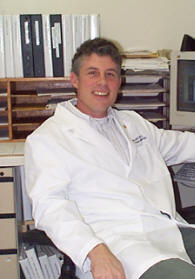 Richard Kurten, Ph.D.
Richard Kurten, Ph.D.
Associate Professor
Director of the UAMS/ACRC Digital and Confocal Microscopy Laboratory
Co-Director of the Lung Cell Biology Laboratory at ACHRI
University of Arkansas for Medical Sciences
Dr. Kurten is the Co-Director of the Lung Cell Biology Laboratory at ACHRI which was established to strengthen respiratory research, with a particular emphasis on asthma. The overall goal of the laboratory is to advance therapeutic strategies for managing asthma and respiratory disease by understanding the cellular and molecular mechanisms of the disease. Dr. Kurten's research interests include: 1.) growth factor receptor regulation and trafficking, especially as it relates to epidermal growth factor and airway epithelial cell wound healing, 2.) studying the problem of beta-2 adrenergic receptor down regulation and desensitization to bronchodilator medications, and 3.) understanding the structure and function of two members of the sorting nexin family of proteins, SNX1 and SNX2. Dr. Kurten is also working with colleagues in the Lung Cell Biology Laboratory to develop gene therapy approaches to mitigate this problem using both rats and isolated lung tissue. Dr. Kurten is also the director of the UAMS Digital and Confocal Microscopy Laboratory and specializes in microscopic visualization of living cells.
 Roy Soberman, M.D.
Roy Soberman, M.D.
Associate Professor of Medicine
Harvard Medical School
The overall focus of Dr. Soberman's laboratory is to understand signal integration and macromolecular organization in cells of the immune system, and how these processes are linked to control the amplification of the immune response. In inflammatory diseases of the kidney, and in all immune disease, myeloid cells and lymphocytes are exposed to a large number of "kinase-based" signals from cytokines, interleukins, and growth factors, and also to signals from G-protein coupled receptors such as those for leukotrienes and chemokines. These combinations change, depending on the microenvironment of the cells. Each of these receptors engages a variety of intracellular pathways to allow these cells to perform the appropriate function in tissue environments. They focus on how cells integrate signaling responses between these different pathways, with the goal of identifying how cellular organization translates into defined biological phenotypes in health and disease. Their long-term goal is to apply this knowledge to human immune and inflammatory diseases. They are focusing on three projects that relate to the amplification of biological responses in myeloid cells, including dendritic cells, mast cells, monocytes, and neutrophils.
Project 1 is the identification and regulation of discrete multiprotein membrane complexes, in vivo and ex vivo, that regulate the formation of the bioactive lipids leukotrienes (LT) and prostaglandins, and how these complexes are regulated in inflammatory diseases. They have found that leukotriene formation is regulated by the signal-dependent organization of multiprotein complexes on the nuclear envelope and ER. They are utilizing a combination of molecular imaging, and biochemical analysis combined with protein mass-spectrometry to determine the composition of these complexes and how their composition determines LT production ex vivo and in vivo.
In Project 2, they have identified the mechanisms by which human and mouse myeloid cells inactivate the chemotactic lipid LTB4. This process is regulated in humans by a member of the 4F family of cytochrome P450s, CYP4F3A and in mice by its orthologue CYP4f18. This project relates to both the regulation of the expression and function of this protein in vivo. They are particularly focusing on the role of redox-sensitive transcription factors in regulating the expression of this protein and also the function of dendritic cells.
Project 3 is to identify novel signal integrating proteins. One approach is to screen for proteins whose intracellular trafficking requires the engagement of specific receptors from different classes. They have identified two unique proteins in antigen-presenting dendritic cells and other myeloid cells using this approach.
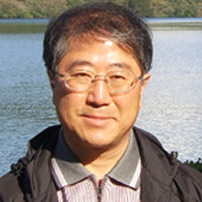 Kwang Chul Kim, Ph.D.
Kwang Chul Kim, Ph.D.
Center for Inflammation, Translational and Clinical Lung Research
Temple University School of Medicine
Mucus lining the airway lumen serves as a major protective barrier for the lung. Various airborne particles and toxic chemicals (e.g., bacteria, viruses, pollens, various toxicants, etc.) are trapped in this mucus layer and continuously cleared by a process called mucociliary clearance. Therefore, any abnormalities in the quality and quantity of mucus can cause serious pulmonary complications often leading to the death of patients as can be seen in pulmonary diseases such as cystic fibrosis, chronic bronchitis, bronchiectasis and asthma.
Mucins are the major glycoproteins present in the mucus, which determine the physicochemical properties of the mucus. They are produced by underlying epithelial cells. Dr. Kim's lab has found that some mucins are present on the apical surface of airway goblet cells and releasable by neutrophil elastase. They have been identified as Muc1 mucins, which were originally discovered in breast cancer cells and have been shown to play crucial roles during metastasis. In primary airway epithelial cells, expression of the Muc1 gene depends on growth and differentiation, and the level of expression is almost comparable to that of breast cancer cells.
They have recently found that Muc1 mucins are an adhesion site for Pseudomonas aeruginosa, a bacterium that is invariably associated with the airway of cystic fibrosis patients. The adhesion of Pseudomonas as well as the activation of our chimera system resulted in tyrosine phosphorylation of the cytoplasmic tail of Muc1 mucin and activation of a MAP kinase. They have hypothesized that Muc1 mucin is a receptor forPseudomonas and is involved in the innate immunity of the lung. Based on this hypothesis, the following projects are currently underway in his laboratory.
- Role of Muc1 mucin during Pseudomonas aeruginosa infection
- Regulation of Muc1
- Elucidation of the Muc1 signaling pathway
In addition, they have also recently identified an agent that can suppress mucin secretion from primary airway goblet cells, which received a U.S. patent. They are planning to develop a mucus drug based on these preliminary results.
 Kenneth Adler, Ph.D.
Kenneth Adler, Ph.D.
Professor of Cell Biology
North Carolina State University College of Veterinary Medicine
Research in this laboratory is directed toward elucidating pathogenic mechanisms associated with inflammation in the respiratory airways as seen in asthma, cystic fibrosis and chronic bronchitis. Specific areas of airway pathophysiology include signal transduction pathways that regulate production and secretion of respiratory mucus at the gene and protein levels. The work is done utilizing primary cultures of differentiated human tracheobronchial cells maintained in a unique air-liquid interface, a procedure developed in this laboratory that maintains these cells so they are essentially identical in structure and function to these cells in the body. This research is funded by NIH and several pharmaceutical firms.
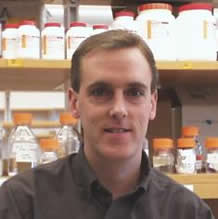 Robert Neumar, M.D., Ph.D.
Robert Neumar, M.D., Ph.D.
Associate Professor of Emergency Medicine
Associate Director, Center for Resuscitation Science
Department of Emergency Medicine at the University of Pennsylvania
Brain ischemia caused by cardiac arrest and stroke kills 300,000 people and disables another 150,000 each year in the United States. Other than early reperfusion, we have no clinically proven therapy to reduce post-ischemic brain damage. After an ischemic insult, neuronal death is delayed for hours to days. This interval represents a potential therapeutic window. The general goal of Dr. Neumar's research effort is to characterize the molecular events that cause delayed neuronal death after brain ischemia and develop clinically effective therapies to minimize brain damage after cardiac arrest and stroke.
The current research in Dr. Neumar's lab is focused on the molecular mechanisms of delayed neuronal death in post-ischemic neurons. Brain ischemia causes immediate intracellular Ca2+ overload that resolves within 1-2 hours of reperfusion. Subsequently, a secondary delayed disruption of Ca2+ homeostasis is observed which is temporally associated with the onset of delayed neuronal death. The mechanism of this secondary disruption of Ca2+ homeostasis remains unclear and potentially involves dysfunction of Ca2+ regulatory proteins in the plasma membrane, endoplasmic reticulum and mitochondria. Their experimental approach to this question involves functional analysis of Ca2+ regulatory proteins in post-ischemic neurons.
A second line of investigation involves analysis of proteolytic cascades in the post-ischemic neurons. Both calpain and caspase proteolytic pathways are activated in the brain after ischemia and reperfusion. While early investigations have linked caspases to apoptosis and calpains to necrosis, there is a growing body of evidence that significant cross-talk occurs between these two pathways. Their work is focused on determining the causal role these and other proteolytic pathways play in delayed post-ischemic neuronal death. They have recently characterized the time course and location of both calpain and caspase activity in a model of transient global brain ischemia. Their current experimental approach involves biochemical and molecular manipulation of these proteolytic cascades.
 Sathyamangla Prasad, Ph.D.
Sathyamangla Prasad, Ph.D.
Assistant Professor, Molecular Medicine
Cleveland Clinic Lerner Research Institute
The β-adrenergic receptors (β-ARs) belong to a family of seven transmembrane receptors also known as the G-protein-coupled receptors (GPCRs), which form the interface between the sympathetic nervous system and the cardiovascular system.
Among the most powerful regulators of cardiac function, β-ARs are chronically desensitized and down regulated under conditions of heart failure, in part because of increased phosphorylation of β-ARs by β-adrenergic receptor kinase 1 (β-ARK1). β-ARK1 forms a cytosolic complex with phosphoinositide 3-kinase (PI3K) and targets PI3K to the receptor complex following agonist stimulation. β-ARK1-targeted PI3K activity at the receptor complex is required for β-AR internalization because expression of inactive PI3K attenuates receptor internalization.
Importantly, cardiac-specific overexpression of inactive PI3K ameliorates cardiac dysfunction in mouse models of heart failure by blocking receptor of internalization, which seems to result in preservation of β-AR function.
The underlying mechanism by which this preservation occurs is unknown. Identifying how PI3K regulates these proteins involved in the preservation of β-AR function would allow the development of novel therapeutic interventions for heart failure or could complement current treatments.
Dr. Prasad’s laboratory uses a combination of proteomics, transgenic mouse models, and cell culture systems to comprehensively investigate and elucidate the underlying molecular mechanisms of this receptor.
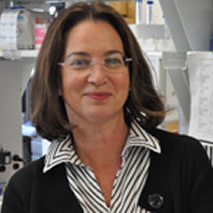 Laurie Kilpatrick, Ph.D.
Laurie Kilpatrick, Ph.D.
Associate Professor
Sol Sherry Thrombosis Research Center
Temple University School of Medicine
Dr. Kilpatrick's research focuses on investigating mechanisms that control pro-inflammatory signaling in cells of the innate immune system. A particular focus is neutrophil dysfunction and the development of acute lung injury and Acute Respiratory Distress Syndrome (ARDS). Neutrophils are key components of host defense against infection but, if not appropriately regulated, can also trigger lung injury and the development of ARDS. TNF and other pro-inflammatory cytokines are implicated in neutrophil dysfunction through activation of inflammatory signaling and suppression of neutrophil spontaneous apoptosis. Understanding the molecular mechanisms regulating neutrophil lifespan and pro-inflammatory mediator release is critical for development of novel therapies targeting neutrophil dysfunction during inflammation. Dr. Kilpatrick's laboratory is investigating signaling pathways that control 1) the release of toxic oxygen radicals and proteases, 2) cell survival and apoptosis, and 3) crosstalk between cytokines and β2-integrins in regulating neutrophil cellular responses. Recently, they have identified the kinase, delta Protein Kinase C (δ-PKC) as an important regulator of pro-inflammatory and anti-apoptotic signaling in the neutrophil. Control of specific signaling components such as δ-PKC offers a unique site for therapeutic intervention that could protect the lung from neutrophil-mediated tissue damage during inflammatory diseases. They are currently conducting preclinical studies in a rodent model of ARDS to test a novel δ-PKC-TAT inhibitory peptide for the treatment of acute lung injury.
A second area of research is investigating the mechanism of crosstalk between the chemokine receptor CCR5 and the Substance P (SP) receptor neurokinin-1 (NK1R). SP is an important neuroimmune modulator, particularly with respect to the immune functions of monocytes/macrophages. SP is a potent pro-inflammatory mediator and plays an important role in inflammation and viral infections such as HIV infection. The objective of these studies is to determine how SP regulates chemokine signaling and chemotaxis in human monocytes and macrophages.
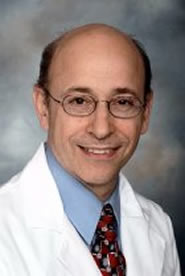 Lance Becker, M.D.
Lance Becker, M.D.
Professor of Emergency Medicine
Director of the Center for Resuscitation Science
Department of Emergency Medicine at the University of Pennsylvania
Dr. Becker is nationally recognized for his research in resuscitation. He has received numerous national awards and recognition for his work and leadership. He was selected by Emergency Medicine residents as the "Attending Physician of the Year" in 1997, has been awarded the "Time, Feeling, and Focus" award from the American Heart Association, as well as other leadership awards from the National Emergency Cardiac Care Committee of the American Heart Association. Dr. Becker was the National Conference Director for the American Heart Association's Emergency Cardiac Care Evidence Evaluation Conference in September 1999 to create new national CPR recommendations, has served on the National American Heart Association's Basic Life Support Committee and Advanced Life Support subcommittees. He has served as representative to the International Liaison Committee on Resuscitation and helped create and continues to co-direct the Resuscitation Science Symposium of the American Heart Association, the leading international venue for the presentation of cutting edge science in resuscitation. At the 2005 International AHA Guidelines Conference for consensus on international resuscitation science and new CPR recommendations, he acted as the Chair for the daily "Controversial Topics" sessions that revisited the most challenging resuscitation topics each day.
Dr. Becker' research interests are translational and extend across the basic science laboratory into animal models of resuscitation, and to human therapies. He developed the Emergency Resuscitation Center at the University of Chicago to bring investigators from diverse fields together for multidisciplinary resuscitation research and for improved training of young resuscitation scientists. His cellular studies have helped define cellular reperfusion injury mechanisms, mitochondrial oxidant generation, reactive oxygen and nitrogen species responses to ischemia, apoptotic activation following ischemia, signaling pathways, new cellular cytoprotective strategies, and hypothermia protection. Additional studies are ongoing on development of novel human coolants for rapid induction of hypothermia, inflammatory pathways activated following shock and cardiac arrest, improving the quality of CPR, new defibrillator and cardiopulmonary bypass technologies, epidemiology of sudden death, and novel treatments for cardiac arrest.
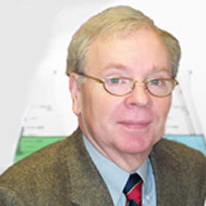 Thomas Rogers, Ph.D.
Thomas Rogers, Ph.D.
Director, Center for Inflammation, Translational and Clinical Lung Research
Professor, Fels Institute for Cancer Research and Molecular Biology
Center for Substance Abuse Research
Temple University School of Medicine
Dr. Rogers' research interests have centered on an understanding of the cross-talk between G-protein-coupled receptors (GPCRs) at the level of both protein function and gene expression. They have focused our attention on chemokine, opioid, and formyl peptide receptors because these groups of receptors play a significant role in the regulation of inflammatory responses.
First, the capacity of these receptors to regulate the expression of other GPCRs and their cognate ligands; and second, the cross-talk between opioid and chemokine receptors at the level of protein function. These studies show that activation of certain GPCRs induces the expression of several chemokines and chemokine receptors, including those chemokines that perform critical pro-inflammatory functions. In contrast, there is a category of GPCRs which mediates anti-inflammatory responses by directly inhibiting the expression of pro-inflammatory chemokines and/or their receptors.
Second, they have found that several of the GPCRs are capable of the cross-regulation of other GPCRs through a process termed “heterologous desensitization". This process occurs when one GPCR is activated by its ligand and induces a signaling pathway which leads to the inactivation of a second, and distinct, GPCR. Their current work suggests that it should be possible to utilize the process of heterologous desensitization to devise strategies to develop treatment therapies for a number of important disease states.
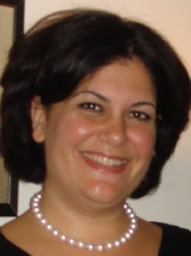 Maria Limberis, Ph.D.
Maria Limberis, Ph.D.
Research Assistant Professor of Pathology and Laboratory Medicine
Director, Animal Models Core at the Gene Therapy Program
Perelman School of Medicine at the University of Pennsylvania
Dr. Limberis investigates gene therapy for genetic lung diseases that include cystic fibrosis and alpha-1-antitrypsin deficiency. She is developing adeno-associated virus vectors and lentiviral vectors for the delivery of therapeutic genes to the affected airway epithelium. She also studies the immunological implications of lung-directed gene therapy with a specific emphasis on cellular immune activation to therapeutic transgene products.
 Raymond Penn, Ph.D.
Raymond Penn, Ph.D.
Professor
Thomas Jefferson University
The major focus of Dr. Penn's research is to identify cellular and molecular mechanisms by which G-protein-coupled receptors (GPCRs) mediate important functions in airway cells. GPCR signaling regulates contractile function, synthesis and release of autocrine factors, and cell growth in various airway cells, including airway smooth muscle (ASM), airway epithelium, lung fibroblasts, and T lymphocytes. Aberrant GPCR signaling or exaggerated presentation of GPCR stimuli can promote ASM hypercontractility, airway remodeling, and ASM hyperplasia/hypertrophy, all of which contribute to the pathogenesis of asthma. Moreover, many GPCR genes possess mutations that alter their expression or function; Dr. Penn is particularly interested in characterizing such altered function and its contribution to disease state or disease therapy.
